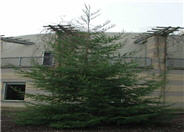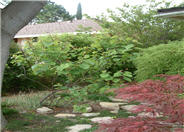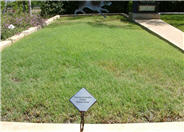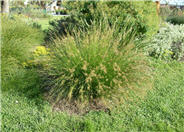
Common name:Coast Redwood
Botanical name:Sequoia sempervirens
This fast-growing, aromatic tree has soft, dark green foliage with long needles appearing in flat sprays and brown, barrel-shaped cones that appear after 1 year. Its soft, red-brown bark is fiberous and furrowed. Particularly after mechanical damage, this tree will stump sprout to form new, young trees around the stump. Avoid planting in areas of high foot traffic.

Common name:Western Redbud
Botanical name:Cercis occidentalis
This deciduous shrub ranges from 6-20 ft. tall and 10-15 ft. wide. It is desirable for its magenta spring flowers, yellow to red fall color, and dangling winter seed pods. It is tolerant of many soil types, drought and oak root fungus. It attracts hummingbirds and butterflies. The Western Redbud can be found statewide in California in the foothills below 4500 ft. elevations in chaparral and woodland communities
- Cornflower Farms

Common name:Buffalo Grass
Botanical name:Buchloe dactyloides
Native American grass, can make a low water lawn, little maintenance needed. Slow to establish, a little summer water can look quite nice. Winter brown. Full Sun. Only grows 4-8". Early green up in spring. Soft textured. This perennial shortgrass grows 2-5" high and 6-12' wide. The rouded, hollow stems have gray/green curly leaves that are 1/10" wide and 2" long. This grass is very drought-resistant and turns tan in winter and lavender in autumn.

Common name:Autumn Moor Grass
Botanical name:Sesleria autumnalis
A small, mounding grass with yellow-green leaves that reaches 12" high. In the fall it sends up narrow flower stems that have silvery-white inflorescence. When planted in masses, it has a striking appearance. It is drought tolerant.
| Designer: Earthcraft Designs | No More Mowing! |
Photographer: City of Santa Cruz |
Soils and Compost:
Physical weed control, including mulching, or hand removal protects the watershed from harmful chemicals.
Water Saving Tip:
Group plants in your garden according to water needs (hydrozone).
Integrated Pest Management:
Attract, or buy beneficial insects such as ladybugs and lacewings to control pest outbreaks in your garden.
